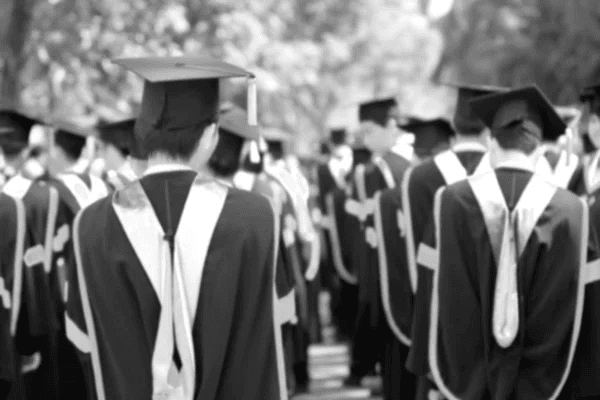Being a modern student means more than lectures and exams. The higher education history shows that everyday lives of young people and their expectations have changed. And with them, their values. Changes have taken place in the academic environment and the structure of campus culture. Financial issues and professional ambitions have not been spared from change either. Therefore, today the education concept encompasses the ability to adapt to innovations and transformations. What was once considered a stable path to success has now chanced. It has turned into a mosaic of challenges and opportunities.

The 1950s Discipline vs. the 21st Century Freedom
In the 1950s, college life was structured. It was also formal. After World War II, the American education system expanded rapidly thanks to the G.I. Bill. However, technology was modest.
For many, being a college student in the 1950s meant:
- Living in a dormitory;
- Adhering to strict rules;
- Participating in clubs;
- Focusing on a stable career.
Today’s university learners, on the other hand, face a completely different reality. This includes global mobility and significantly broader opportunities for career advancement. Today’s college life includes both distance learning and social networking. It also includes a much wider choice of disciplines. In addition to the above, there are digital tools and online resources. This means that now, if students are behind or have a heavy workload that they need to balance with a large number of tasks, they are not at a disadvantage with today’s opportunities. They can enter the write my essay request and use an online resource, namely an online writing service. A responsible resource always works with expert top writers. As a result, qualified online assistance is readily available.
This is an excellent chance to enrich one’s education. Specifically, it allows them to receive a well-written and structured paper on time that meets the necessary academic requirements and deadlines.
From passive listener to active creator
In the 1950s, the learning process was mainly based on lectures, handwritten notes, and physical laboratories. Teachers controlled knowledge. Students learned to accept information.
Today, thanks to blended learning and online courses, students can integrate self-paced learning. They may also use platforms for collaboration. For today’s college student, this means more autonomy.
In the past, the emphasis was on factual knowledge and discipline. Academic assessment was based on written exams.
In contrast, modern methods include:
- Project-based learning;
- Portfolios;
- Interdisciplinary tasks.
This changes the role of the university student. It moved from a passive listener to an active creator.
Campus Culture
College life in the 1950s was defined by:
- Fraternities/sororities;
- Sports teams;
- Formal dances.
Social norms and expectations were more conservative. Most young people adhered to established roles.
Modern openness. Diversity
Today, campuses strive to be more inclusive. There are now significantly more students from different social and gender groups. Activism. LGBTQ+ rights. Social justice movements. All of this is now part of modern college life.
Modern university students are also often involved in research on social issues or startups.

Finances. Career priorities
In the 1950s, many students paid for their education thanks to post-war benefits.
Today, the cost of higher education has increased many times over. For many families, the college student budget is often a key issue. But students combine work with study, take out loans, or look for scholarships. This changes priorities. Most modern college students choose majors with clear employment prospects.
If you are looking for how many college students in the US, it is clear that today’s higher education system here covers a large number of learners. Based on recent data, now its number in the US is between 18.4 and 19.25 million.
Stability vs. flexibility
In the 1950s, the goal for most people was a stable position. For example, in a corporation or government.
Today, university students are focused also on freelancing, entrepreneurship, or remote work. This is facilitated by the development of technology.

Technology
In the past, searching for materials took time. Information was tied to libraries and printed sources. All this fostered careful analysis and citation skills.
For today’s college students, the internet has opened up instant access to resources and the global scientific community. Yet it also brings challenges. These are the questions of academic integrity and new forms of assessment.
Conclusion
Comparing what it meant to be a student earlier and today shows how much higher education has transformed. Namely, from a formal and limited access system to an inclusive and technology-rich one. Today’s college student has many more options for education and career. Despite this, they face new challenges. However, one thing remains key. It is the desire to grow and seize opportunities.
Emma Watson
Emma is a professional content writer and researcher. She specializes in educational topics and social trends. Her works focus on crafting analytical pieces that connect historical context with modern perspectives. With experience in academic writing, Emma create insightful content that helps readers better understand the education’s evolution.
